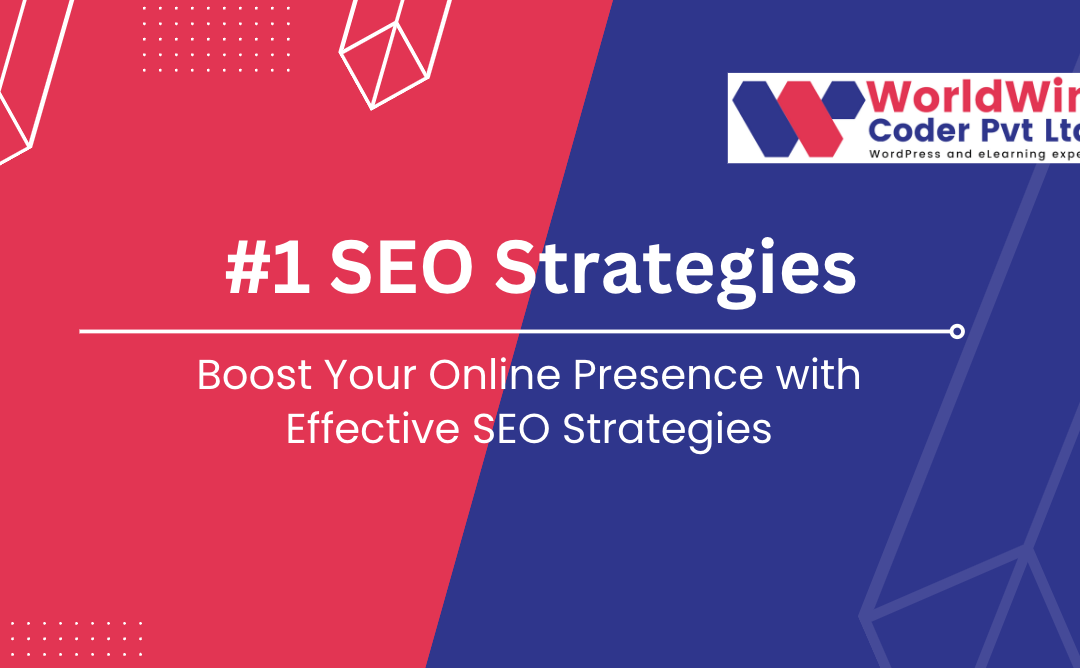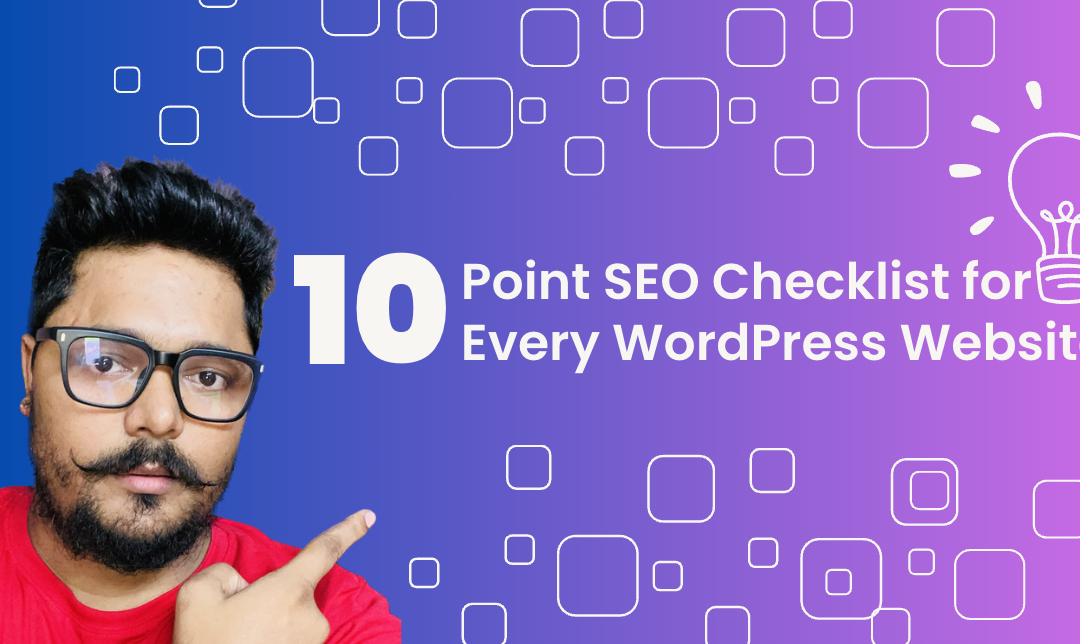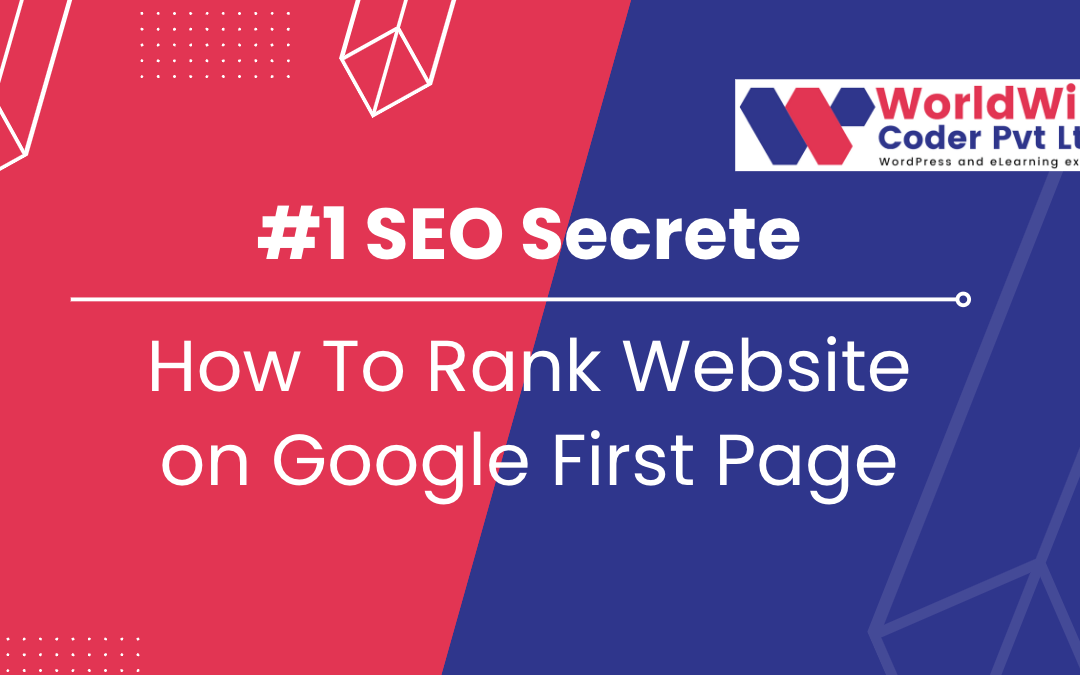
by Vishavjeet | Dec 28, 2023 | blog, Digital Marketing
With the evolving technology, there is more ease in doing trivial chores and business operations. Because of the rise of mobile applications in the e-commerce sector, many people are reaping benefits from it. This includes both the businesses and customers who are immensely grateful for this B2B marketplaces invention.
Online B2B marketplaces play a critical role in building a bridge between buyers and sellers and letting new businesses develop their voice through the internet. They play a key role in discovering new products that are equally helpful for clients and for retailers and manufacturers.
E-commerce applications now play a significant role in maintaining the global trade of any country. Industries are equally affected by this change that has transformed the whole phenomenon of buying and selling goods. In 2022, sales in the e-commerce sector exceeded the limit of 5.7 trillion U.S. dollars worldwide and are only predicted to grow in the upcoming years.
List Of The Top 10 B2B Marketplaces In The World For The Year 2024
The businesses are expanding at an exponential rate to meet the needs of the growing population. Among this, there is a dire need for authentic and verified marketplaces that customers can easily trust with their personal and financial information.
eWorldTrade has remained a pioneering B2B marketplace of the world with its 10 years of expertise in the e-commerce sector. They have built around 500,000 registered users with their extreme dedication and commitment to staying true to their values and goals. Moreover, they provide numerous benefits to their sellers and buyers to keep up with their positive brand name and services.
Benefits
One-stop Solution– eWorldTrade has worked hard to stay one step ahead of its competitors and address all the new market changes and trends.
Transparent Operations– They provide complete transparency in their operations to their clients, whether they are businesses or customers purchasing goods.
Global Trade Shows- They also host global trade shows to increase the reach of their business customers and build a community of verified suppliers and manufacturers.
2. DH Gate
DH Gate is a Chinese B2B and B2C platform that is known for its exceptional services and goods that are shipped all around the world at competitive prices. They assist all types of businesses in reaching their goals and unleashing their potential.
Benefits
Affiliate Program- This program attracts potential partners who might be looking for a wholesale or manufacturing source to start their business.
Tracking- This feature allows their customers to track their products anytime they want and get updates about their parcels.
3. Amazon
Amazon is a well-known B2B marketplace that provides an inclusive environment with its latest and innovative features and technology. They gain their working drive from their customers rather than competitors and aim to make online shopping more safe and secure for them. They also want to help businesses in reaching their goals and milestones towards building a better platform.
Benefits
Eco-friendly Initiative- Amazon dedicatedly promotes the benefits of eco-friendly packaging and delivery that can greatly reduce greenhouse gas emissions and other problems threatening nature.
Many Subsidiaries- They also have multiple subsidiaries like Amazon Web Service, Amazon Prime Video, Amazon Prime, Amazon Music, Amazon Publishing, and so on to satisfy more needs of their customers.
Amazon News- This is another great section of options that provides the latest news and details about their every service along with any new change they are going to implement.
4. eBay
eBay ranks among one of the best B2B e-commerce marketplaces that has transformed the online marketplace. They provide numerous benefits guaranteed to provide comfort for customers and growth for businesses. Along with this, they have a huge directory of products about 1.9 billion, and verified sellers that have almost every product that you might desire.
Benefits
Artificial Intelligence- eBay leverages AI to provide seamless operations to their business customers to help them in their functions while saving a great deal of time and effort.
eBay Newsroom- This is an official news channel for eBay where they post their recent upgrades or inspire their clients about the latest achievements of their sellers and manufacturers.
5. Alibaba
Alibaba is a leading B2B marketplace for global trade that works mainly to make trade easier for local and international communities. They have about 200M+ products on their websites that cater to the needs of their millions of customers. This has also assisted them in building a loyal community of more than 200k suppliers that are from every possible industry and sector.
Benefits
Business Offerings- You can freely explore products and suppliers for your business through several offerings that are available at Alibaba.
Assured Quality- They are strict in maintaining the top-notch quality of their products and services that have made them come so far with a reliable name in the market.
Personalized Trading- They also provide tailored support that is needed for the growth of your business along with free samples of products.
6. Global Sources
Global Sources is an internationally recognized B2B sourcing platform that has been promoting authentic trade through its multichannel business subsidiaries. They provide its sellers with trustworthy market information and tailored sourcing solutions that will help them increase their reach. Global Sources serves about 10 million registered B2B buyers with quality products and services.
Benefits
Trade show- They also host trade shows in Hong Kong where they increase the brand visibility of their small and medium-sized businesses for partnership and community building.
Live Streaming- They also host virtual meetings and live streaming for their customers to showcase their new collection or holiday discounts that are powered by their AI.
Match- Match is their free, customized business matching service that carefully evaluates businesses’ sourcing requirements and matches accurate partners according to that.
7. EC Plaza
EC Plaza is a reliable B2B platform that provides both online and offline services to its 1,000,000 members. They have built a worldwide network where they cater to the needs of several businesses from every corner of the world.
Benefits
Refund & Return- This is a great benefit for their customers, it allows them to refund and return any parcel they want.
Unique Products- They also provide unique products that are specially curated for your business ventures with your designed logo and packaging.
8. EC21
EC21 was founded in 1997 by the Korea International Trade Association (KITA) which has helped all types of businesses from small startups to medium-sized businesses. They have a range of services and offices around d the world where they adequately address customers’ queries and problems. Moreover, they have a user-friendly interface that helps you navigate any product you want within seconds.
Benefits
TradeVerify- This is an authentication and verification service provided by EC21 to ensure their business partners that their platform is legal and they are indeed associated as a trading partner with them.
Agent Program- This program targets sales agents for their brands and opens new job opportunities for individuals interested in marketing their products with high profits and benefits.
Buying Leads- Another great thing about EC21’s platform is that they continuously renew their buying leads according to their customers and provide a chance for any manufacturer that is looking to sell that product.
9. Made in China
Made In China is a renowned B2B marketplaces that is committed to providing more business opportunities for small businesses in China. They provide millions of products manufactured from the Chinese market to all around the globe to increase their export rate. Furthermore, they serve more than 20,000,000 registered and satisfied buyers with high-quality products.
Benefits
Smart Expo- They conduct their smart expo annually where they present various technology and consumer goods targeting both consumers and businesses with numerous exhibitions.
Easy Sourcing- This is a great time-saving tool for buyers that allows them to post sourcing requests and get quotations from suppliers for free without wasting any kind of effort.
Video Channel- Made in China also has its video channel where it showcases its new products along with unboxing and functioning of products.
10. Faire
Faire is another well-established B2B marketplace that wants to promote local brands and assist them in their growth. They showcase over 100,000 independent brands together through their single platform and want to empower entrepreneurs to chase their dreams. They simplify and automate all the operations of various businesses to help them focus on other important things.
Benefits
Flexible Payment Options- They provide flexible payment terms to their businesses as they can easily pay the money within 60 days without any kind of interest whenever they have the budget for it.
Free Return- Faire also allows free return of products and services at any time their customers want. They provide a prepaid shipping label to make the process much easier.
Wrapping Up!
These are the best B2B marketplaces platforms that you can find from anywhere around the world. They provide an authentic list of buyers and sellers while maintaining their strict policies and regulations. You can carefully go through them to find the one that suits your needs.

by Vishavjeet | May 28, 2023 | blog, Digital Marketing, SEO
Creating effective SEO strategies for a WordPress website involves various techniques and considerations. Here are some steps you can follow to improve your website’s search engine visibility and achieve better results
Effective SEO strategies are crucial for any WordPress website aiming to improve online visibility and drive organic traffic. By understanding the importance of SEO, conducting thorough keyword research, and optimizing on-page elements, you can enhance your website’s search engine visibility. Creating high-quality, engaging content, optimizing for mobile devices, and improving page speed contribute to a positive user experience. Building a strong internal and external linking structure, utilizing meta tags and schema markup, and integrating social media promotion are additional strategies to boost your website’s online presence. Ongoing monitoring and analysis of key metrics, coupled with continuous optimization and adaptation, ensure long-term success in the ever-evolving SEO landscape.
The Importance of SEO for Website Visibility and Organic Traffic
1. Introduction
- Importance of SEO for any WordPress website
- Overview of the steps to create effective SEO strategies
2. Understanding the Importance of SEO
- Enhancing Website Visibility and Organic Traffic
- The Role of SEO in Online Presence and Branding
3.Understanding Keyword Research and Optimization for Improved SEO
- Conducting Thorough Keyword Research
- Utilizing Keyword Tools for Analysis and Selection
- Implementing Targeted Keywords in On-Page Elements
4. On-Page Optimization Techniques
- Optimizing Page Titles and Meta Descriptions
- Incorporating Keywords Naturally in Content
- Utilizing Header Tags (H1, H2, etc.) for Structure and SEO
- Optimizing URL Structure for Search Engine Visibility
5. Creating High-Quality and Engaging Content
- Importance of Valuable and Relevant Content
- Incorporating Keywords in Content Naturally
- Using Multimedia Elements to Enhance User Experience
6. Mobile-Friendly Design and Optimization
- The Significance of Mobile-Friendly Websites
- Implementing Responsive Design Techniques
- Testing and Optimizing Website for Mobile Devices
- Optimizing Image Sizes and Compression
- Leveraging Caching Plugins for Improved Load Times
- Minifying CSS and JavaScript Files for Faster Rendering
8. Internal and External Linking Strategies
- Establishing an Effective Internal Linking Structure
- Using Relevant Anchor Text for Internal Links
- Acquiring Quality Backlinks for Website Authority
9. Meta Tags and Schema Markup Implementation
- Optimizing Title Tags and Meta Descriptions
- Implementing Structured Data and Schema Markup
- Leveraging SEO Plugins for Easy Management
10. Leveraging Social Media Integration
- Using Social Media Platforms for Content Promotion
- Encouraging Social Sharing and Engagement
11. Enhancing User Experience and Navigation
- Importance of Intuitive Design and Clear Navigation
- Improving Site Speed and Performance
- Optimizing for Readability and Accessibility
- Utilizing Google Analytics for Website Performance Tracking
- Analyzing Organic Traffic, Keyword Rankings, and Conversions
- Identifying Areas of Improvement for Continuous Optimization
13. Continuous Optimization and Adaptation
- Staying Updated with SEO Best Practices and Algorithm Changes
- Testing and Experimenting with New Techniques
- Ongoing Optimization for Long-Term Success
14. Conclusion
- Recap the Importance of Effective SEO Strategies
- Emphasize the Ongoing Nature of SEO and Continuous Improvement

by Vishavjeet | May 8, 2023 | blog, Digital Marketing
A comprehensive SEO strategy is essential for any website looking to improve its visibility on search engines and attract more organic traffic. For WordPress websites, there are specific steps that can be taken to ensure optimal SEO performance. This 10-point SEO checklist provides a framework for website owners to optimize their WordPress sites, from conducting keyword research and on-page optimization to analytics and tracking, user experience, mobile optimization, and local SEO. By implementing these techniques, WordPress website owners can improve their search rankings, drive more traffic to their site, and ultimately increase conversions and revenue.
I. Introduction
- Briefly introduce the importance of SEO for WordPress websites
- Explain that a comprehensive SEO checklist can help website owners ensure their site is optimized for search engines
- State the purpose of the article, which is to provide a 10-point SEO checklist for WordPress websites
II. Keyword Research
- Explain the importance of keyword research in SEO
- Describe how to conduct keyword research using tools such as Google Keyword Planner, SEMrush, or Ahrefs
- Provide tips on selecting relevant and high-traffic keywords
III. On-Page Optimization
- Explain the importance of on-page optimization for SEO
- Provide a checklist of on-page optimization techniques, including:
- Optimizing title tags and meta descriptions
- Including target keywords in headers, content, and image alt tags
- Improving website speed and mobile responsiveness
- Adding internal links and optimizing anchor text
- Using schema markup to enhance search visibility
IV. Off-Page Optimization
- Describe the importance of off-page optimization for SEO
- Provide a checklist of off-page optimization techniques, including:
- Building high-quality backlinks from authoritative websites
- Optimizing social media profiles and sharing website content on social media platforms
- Participating in industry forums and online communities
- Using online directories and business listings
V. Content Creation
- Explain the importance of high-quality content in SEO
- Provide a checklist of content creation techniques, including:
- Conducting comprehensive research and analysis before writing
- Writing engaging and informative content that incorporates target keywords
- Creating content that aligns with user intent and satisfies search queries
- Publishing fresh and original content on a regular basis
VI. Analytics and Tracking
- Describe the importance of analytics and tracking in SEO
- Provide a checklist of analytics and tracking tools and techniques, including:
- Installing Google Analytics and Google Search Console
- Monitoring website traffic and user behavior
- Tracking keyword rankings and backlink profiles
- Conducting regular site audits to identify and fix technical issues
VII. User Experience
- Explain the importance of user experience in SEO
- Provide a checklist of user experience techniques, including:
- Ensuring website design is intuitive and user-friendly
- Optimizing website navigation and menu structure
- Ensuring website content is easy to read and understand
- Providing clear and concise calls-to-action
VIII. Mobile Optimization
- Describe the importance of mobile optimization in SEO
- Provide a checklist of mobile optimization techniques, including:
- Using responsive design to ensure website displays correctly on mobile devices
- Optimizing website speed for mobile users
- Using mobile-friendly navigation and menu structure
- Ensuring all content is accessible and readable on mobile devices
IX. Local SEO
- Explain the importance of local SEO for businesses with a physical presence
- Provide a checklist of local SEO techniques, including:
- Creating and optimizing a Google My Business listing
- Building local citations and business listings
- Encouraging online customer reviews
- Optimizing website content for local keywords and phrases
X. Conclusion
- Summarize the 10-point SEO checklist for WordPress websites
- Emphasize the importance of implementing these techniques to improve search visibility and drive traffic to the website.

by Vishavjeet | Feb 22, 2023 | blog, Digital Marketing, SEO
If you’re looking to improve your website’s search engine ranking, one important step you can take is to conduct an SEO competitive analysis. This involves analyzing your competitors’ websites to identify their strengths and weaknesses, and to develop strategies to improve your own site’s ranking. Here are some simple steps you can follow to conduct an SEO competitive analysis:
- Identify your competitors: Start by identifying your top competitors in the search results. Use search engines to find the top sites that are ranking for the same keywords that you are targeting. Make a list of these competitors, and include their website URLs.
- Analyze their keywords: Once you have a list of competitors, you’ll want to analyze the keywords they are targeting. Use tools such as Google AdWords Keyword Planner, SEMRush, or Ahrefs to find the keywords your competitors are using. This will help you understand what keywords are driving traffic to their sites, and which ones you should consider targeting.
- Analyze their website structure: Next, analyze your competitors’ website structure. Look for things like their website’s navigation, URLs, title tags, and meta descriptions. This will help you understand how their website is organized and optimized for search engines.
- Analyze their content: Look at the content on your competitors’ sites, including their blog posts, product descriptions, and landing pages. Analyze the length, tone, and structure of their content. Determine what topics they cover and how they are positioning their brand.
- Analyze their backlinks: Backlinks are one of the most important factors in search engine rankings. Analyze your competitors’ backlink profiles to see where they are getting their links from. Determine the quality of the backlinks, and see if you can find opportunities to get similar links to your own site.
- Determine your own strengths and weaknesses: After analyzing your competitors, determine your own strengths and weaknesses. Identify areas where you can improve your website, such as optimizing your content, building quality backlinks, or improving your website’s structure.
- Develop a plan: Finally, develop a plan to improve your website’s search engine ranking. This plan should include specific steps you can take to address the weaknesses you identified in your website. It should also include steps to capitalize on your strengths, such as developing more high-quality content or building more backlinks.
In conclusion, conducting an SEO competitive analysis can help you identify ways to improve your website’s search engine ranking. By analyzing your competitors’ keywords, website structure, content, and backlinks, you can develop a plan to improve your own site’s ranking. Remember to stay focused on your goals, and be patient as you implement your plan. With time and effort, you can improve your search engine ranking and drive more traffic to your website

by Vishavjeet | Feb 8, 2023 | blog, Digital Marketing
A Project Manager in Information Technology (IT) is a professional responsible for leading a team of individuals towards the successful completion of a software development or technology-related project. They are in charge of ensuring that the project is completed on time, within budget, and to the satisfaction of stakeholders.
Project Managers in IT must possess a combination of technical and business skills, including an understanding of software development processes, project management methodologies, and the ability to communicate effectively with both technical and non-technical team members and stakeholders.
Key Responsibilities of an IT Project Manager:
- Project Planning: The Project Managers is responsible for defining the project scope, setting project goals and objectives, and creating a detailed project plan that outlines the project timeline, resources, and budget.
- Resource Allocation: The Project Managers must ensure that the necessary resources, including personnel and equipment, are available to the project team and allocated appropriately.
- Risk Management: IT Project Managers are responsible for identifying potential risks to the project and implementing risk mitigation strategies to minimize their impact.
- Budget Management: The Project Manager must closely monitor project expenses and ensure that the project stays within its approved budget.
- Team Management: The Project Manager must motivate, manage and mentor the project team members to ensure they are working effectively towards project goals.
- Stakeholder Management: The Project Manager must maintain good relationships with stakeholders and effectively communicate project status, issues and risks to ensure their expectations are met.
- Quality Control: Project Managers must ensure that the project deliverables meet the required quality standards.
Qualifications of an IT Project Manager:
- Education: A bachelor’s degree in computer science, information systems or a related field is typically required for an Project Manager role. Some employers may also require a master’s degree in project management or a related field.
- Project Management Professional (PMP) certification: PMP certification is widely recognized and demonstrates that the Project Manager has the knowledge and experience required to effectively manage projects.
- Technical knowledge: IT Project Managers should have a good understanding of software development processes, project management methodologies, and the latest technologies in their field.
- Communication skills: Effective communication skills are critical for an Project Manager, as they must be able to communicate project goals and status to both technical and non-technical team members and stakeholders.
- Leadership skills: Project Managers must be able to lead and motivate their team members to achieve project goals, resolve conflicts and make difficult decisions when necessary.
In conclusion,
IT Project Managers play a critical role in ensuring the success of technology-related projects. They must possess a combination of technical, business and leadership skills to effectively lead their teams, manage project risks and deliver high-quality results.






